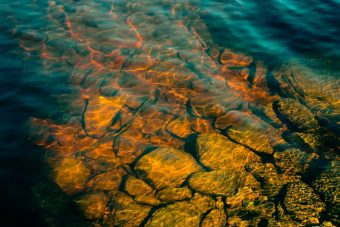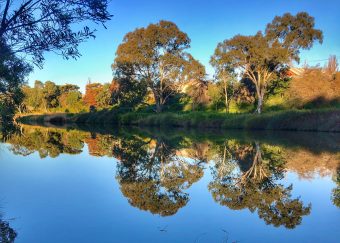
Across the world, lakes fed by rivers, glacial melt, groundwater and rain have played an important role in human civilization and development. They contain 90 percent of the fresh water on the planet’s surface, house an array of wildlife, and make possible farming, fishing and industry. Yet, due to climate change, pollution, mining, population pressure, and unsustainable land use, they are declining at an unprecedented rate. Freshwater ecosystems have lost more extent and biodiversity than almost any ecosystem in the world.
The threats facing lakes are interlinked. Lake pollution is worsened by global heating – leading, for instance, to more frequent and intense floods that cause nutrients, surface-bound contaminants and solid waste to be flushed into rivers and lakes. “Water pollution has continued to worsen over the last two decades, increasing the threats to freshwater ecosystems and human health,” says UNEP’s 2021 flagship report Making Peace With Nature.
Fertilizer is an important component of current food systems, and yet it is also a major source of river and lake pollution. Rain washes the nutrients in fertilizer into waterways and lakes which can lead to damaging algal blooms, which are predicted to increase by at least 20 percent by 2050.
Wastewater is another pollution threat. Up to 80 percent of global wastewater is estimated to enter water bodies untreated with adverse impacts on human and ecosystem health.
United Nations resolution calls for action on lakes
Recognizing these threats, in March 2022 the United Nations Environment Assembly adopted a resolution on Sustainable Lake Management. It calls on countries to protect, restore, and sustainably use lakes, while integrating them into national and regional development plans.
“This is the first ever United Nations resolution specifically focusing on the sustainable management of lakes, without distinguishing between freshwater, alkaline, saltwater or soda lakes,” says Lis Mullin Bernhardt, a freshwater expert with the United Nations Environment Programme (UNEP). “We hope it will help galvanize funding and efforts to protect and better manage lakes that are so important for human well-being.”
The March 2022 UN Environment Assembly also adopted a resolution asking UNEP to support Member States in the development of national action plans to sustainably manage nitrogen, a nutrient in fertilizer that can create aquatic “dead zones”.
Tackling interlinked threats requires sustainable lake management involving the collaboration of stakeholders to ensure sustainable land management and integrated water resources management. Lake Dojran, shared by North Macedonia and Greece, is an example of where such approaches are promoting conservation and restoration.
A recent globally agreed definition of nature-based solutions could help promote environmentally friendly and cost-effective ways of sustainably utilizing the services lakes provide and tackling some of the challenges they face, say experts.
More:
Lakes are a haven for biodiversity

People, plants, microbes and animals depend on healthy lakes and have a special role as stopovers for migratory birds. Lakes are a tremendous source of biodiversity – the library of life on which we all depend for our survival. Six percent of total biodiversity, or over 140,000 described species, including 55 percent of all fish, rely on freshwater habitats for their survival. Yet, nature is declining at an unprecedented rate. Globally, around 1 million of 7.8 million species face extinction. Investing in natural infrastructure, including lakes, makes sense.
“Reduction of pressure on biodiversity and ecosystem services in populated, productive and human-transformed landscapes and freshwater systems is a key conservation strategy,” says Making Peace with Nature.
Lakes provide recreation and food
Across the world lakes provide food, support livelihoods, and have recreational and intrinsic value. Lakes support a huge variety of fish, including the sturgeon, which can grow to 6 metres and weigh more than 680 kg.
Some lakes are vital sources of food. Lake Victoria, the world’s second-largest lake by surface area, is a prime example. According to the African Center for Aquatic Research and Education, the lake supports the largest freshwater fishery in the world, producing 1 million tons of fish per year and supporting the livelihoods of 4 million people.
Lakes help fight the climate crisis
Lakes help keep the planet cool and absorb flood water. Lakes, rivers and wetlands hold 20–30 percent of global soil carbon despite occupying only 5–8 percent of its land surface. Protecting and restoring lakes is key to both mitigation efforts and to helping ecosystems and humans adapt to the impacts of climate change.
For instance, lakes have been tapped for their ability to cool cities. Toronto, Canada’s biggest city, has implemented the largest sustainable lake-source cooling system in the world. It uses cold lake water as a renewable energy source
Source: UNEP

